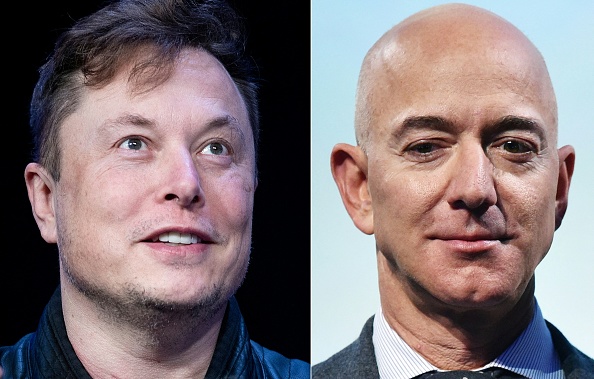 When President Kennedy committed our nation to put a human on the Moon, he also created the initial architecture of the space program. Only the government had the capacity to marshal the resources necessary to achieve the goal. So began a space program defined by government leadership, reliant upon government contractors, and funded by Congress. It worked. The achievement was monumental.
When President Kennedy committed our nation to put a human on the Moon, he also created the initial architecture of the space program. Only the government had the capacity to marshal the resources necessary to achieve the goal. So began a space program defined by government leadership, reliant upon government contractors, and funded by Congress. It worked. The achievement was monumental.
But we did not go to the Moon to stay. We made several more visits and then moved on. We created the Shuttle and the International Space Station, magnificent achievements, but they took too long in gestation and cost far more than originally intended. The reason for the delays and the expense was the inherent nature of government. Space became just one of the many congressional budget priorities. Administrations had to weigh space initiatives against other pressing priorities. Congressional enthusiasm reflected which congressional districts got the money.
A nascent space industry emerged in the late 1970s. The industry’s problem was that the only way to get to orbit was on a government rocket. The path was tortuous and expensive, involving multiple steps. In the early 1980s the first commercial rocket emerged, the Conestoga, from a company founded by former astronaut Deke Slayton. But he found the process of multiple steps and licenses burdensome. When NASA insisted all commercial flights use the Shuttle, the Conestoga died.
President Reagan began the march toward quantifiable commercial activity with a series of executive orders … In 1989, the first U.S. licensed commercial rocket made an orbital flight.
President Reagan began the march toward quantifiable commercial activity with a series of executive orders. The Department of Transportation was assigned responsibility for regulating and facilitating commercial launches. In 1989, the first U.S. licensed commercial rocket made an orbital flight. Under President Clinton, the Office of Commercial Space, which had been housed with the Secretary of Transportation, was transferred to the Federal Aviation Administration. That office has facilitated launch rate growth.
In the 21st Century, the commercial space industry’s growth has blossomed. There are a growing number of government and industry missions. Satellites are orbiting for communications, weather, navigation, reconnaissance, and timing.
Near the turn of the century, young entrepreneurs like Elon Musk and Jeff Bezos took note of this growing sector. They saw opportunities to develop new markets. They were space enthusiasts who had one huge advantage over many others in the space business. They had access to capital from the money they had reaped in the dot.com revolution, and they were willing to risk that wealth in space ventures.
The early efforts of Musk and Bezos took different tracks. Bezos preferred a gradual development of launch technology while Musk believed in an approach of building, launching, and accepting early failures as learning experiences. Musk, for example, believed that assembling rockets horizontally would save construction costs. He was told by the experts in rocketry that the vehicles had to be assembled vertically. His first two Falcon 1 flights failed. Musk was nearly out of money when he succeeded with the third flight of the Falcon 1. SpaceX then qualified a series of Falcons to fly real commercial missions.

Near the turn of the century, young entrepreneurs like Elon Musk and Jeff Bezos took note of this growing sector … They had access to capital from the money they had reaped in the dot.com revolution, and they were willing to risk that wealth in space ventures.
Once reliability had been established, NASA saw an opportunity to contract with SpaceX to fly even its most crucial payloads. The military also took advantage of reliability at reduced cost. SpaceX branched out and deployed a communication network of 5,200 satellites, a commercial success widely used, including by Ukraine in its war with Russia.
But as the success of SpaceX grew, questions began to arise about whether the Federal Government was too reliant on a commercial entity without much peer competition. What happens if SpaceX is unable to deliver on its commitments? The commercial space community answered. Blue Origin, the Bezos company, has methodically developed its rocket engine, the Vulcan. United Launch Alliance bought those engines for largely military use. The engines also will be flown soon by Blue on its own New Glenn spaceships. Sierra Space will soon fly a new spacecraft that looks like a mini–Space Shuttle. Space-based communication networks are widely deployed by numerous domestic and international companies. Private space stations are being developed. Commercial companies are building and deploying Moon experiments. It is a vibrant sector with significant non-governmental investment.
SpaceX was the first to take advantage of NASA’s program to contract with private companies to do government missions. But it is not alone. Today, a thriving commercial space community is providing the government with innovation and cost saving. Government still has a major role. NASA must be in the forefront of space science missions like the James Webb Telescope. And instead of dominating all space decisions, it now adds expertise to a robust network. A new era, the Musk era, has arrived and is thriving.
Robert S. Walker represented the 16th District of Pennsylvania in the U.S. House of Representatives from 1977 to 1997. He served as chairman of the House Science, Space, and Technology Committee, and is the former chairman of the Commission on the Future of the U.S. Aerospace Industry. He is currently the Founder and Chief Executive Officer of moonWalker Associates.




